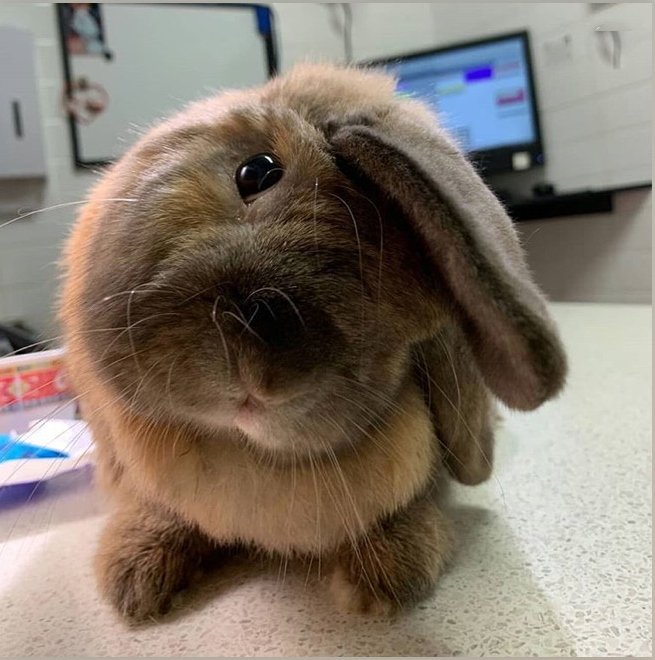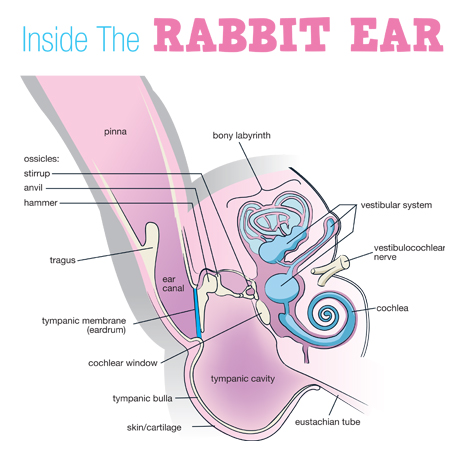- Home
- Head Tilt In Rabbits
Head Tilt In Rabbits
Key Points:
- Head tilt in rabbits is not unusual. It is a vestibular disease that is also known as torticollis or wry neck.
- There are many reasons why a rabbit may suddenly tilt. The most common reasons is an ear infection and/or E. cuniculi infection.
- Depending on the cause, rabbits may recover completely. However, those whose heads are permanently on their side, can still lead full, happy lives.
- Owners need to give the medications time to work. Effective treatment usually takes at least 10-12 weeks.
- There is an initial period in which a rabbit may need to limit his movement. However, owners should encourage their pet to be active as soon as possible as activity speeds up recovery.
Seeing the World Sideways
Although head tilt in rabbits looks strange, it is not unusual. It's a vestibular disease, meaning the inner ear and the part of the brain which controls balance and eye movement are damaged. The result is a head that is tilted 90 degrees or more, difficulty standing and an unsteady gait.
It's not necessarily a fatal condition. Depending on the cause, many bunnies make a partial or full recovery, provided they receive prompt medical treatment and the owner is willing to give supportive care. For those bunnies who do not straighten, they adjust to their new normal and continue to experience a good quality of life.
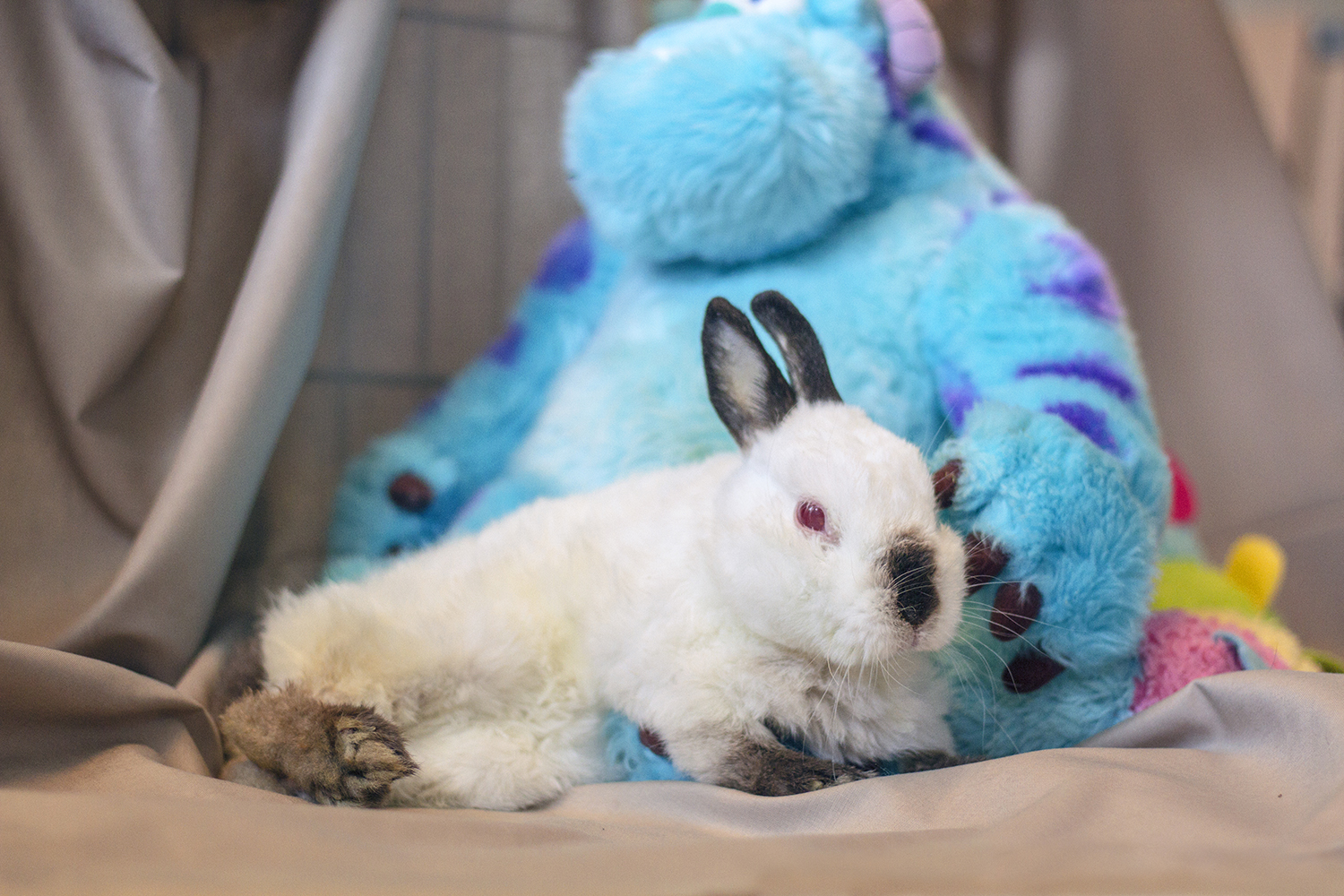 Sabrina suffered from head tilt, but with medical treatment and supportive care, she made a full recovery and lived for several more years.
Sabrina suffered from head tilt, but with medical treatment and supportive care, she made a full recovery and lived for several more years.Photo by Dustin Yoder.
Signs of Head Tilt
The signature twist of the head is not always the first sign a rabbit is experiencing head tilt. Often, the initial signal is an unsteady gait, circling, stumbling and even unsuccessful leaps into the litter box. Rolling may not happen at first either, but begin a day or two after the initial observations. The rabbit often moves as if intoxicated. Initially, affected rabbits may or may not continue eating. They are reluctant to move and prefer to sit in a quiet spot. Common signs of head tilt in rabbits may include:
- Unsteady gait, falling down, circling, moving as if intoxicated, rolling
- Inability to stand
- Tilted head (can be 90 degrees or more from normal position).
- Nystagmus (uncontrolled movements of the eye only. The head remains stationary). Movement may be vertical, horizontal or occasionally rotational.
Causes of Head Tilt in Rabbits
Since head tilt is a vestibular disease, the causes of head tilt in rabbits can be divided into peripheral, meaning involving the inner ear, and central (involving the brain)(Brown, 2006).
Peripheral disease
The most common cause of head tilt in rabbits is an infection of the inner ear (which includes the bony labyrinth, vestibular system and cochlea). The infection may originate as an upper respiratory infection and travel up the eustachian tube to reach the inner ear. The infection can also come from the middle ear, especially if the tympanic membrane (ear drum) is ruptured. An infection of the middle ear by itself, cannot cause prolonged head tilt (Brown 2006).
Any nystagmus will usually be horizontal, meaning that you can see the eye dart back and forth horizontally across the orb. Occasionally, rotational eye movements can also be observed.
Other less common peripheral diagnoses include:
- Trauma
- Cancer
- Toxins
Central disease
There is a section of the brain called the vestibular nuclei, to which the vestibular nerve in the inner ear connects. This area of the brain controls balance, so if it becomes compromised, a rabbit will tilt, lose balance and display nystagmus. It is unlikely that whatever disease is present in the vestibular nuclei will affect this area of the brain only. Other neurological symptoms, such as loss of appetite, lethargy, paralysis, weakness, trouble standing and seizures, may also manifest.
The two most common causes of central disease are either Encephalitozoon cuniculi (E. cuniculi) or a bacterial infection. A bacterial infection can originate from the inner ear, the bloodstream or a tooth root infection. Other less common diagnoses are:
- Stroke
- Cancer
- Toxins (heavy metals)
- Metabolic disease (build-up of toxins due to failing liver or kidney)
- Heatstroke
- Raccoon Roundworm (Baylisascaris procyonis)
Vertical nystagmus, meaning that the eye darts up and down the orb, can be seen. Occasionally the nystagmus may also be horizontal or even rotational which may seem confusing. However, vertical nystagmus is only seen with central disease.
Diagnosing and Treating Head Tilt in Rabbits
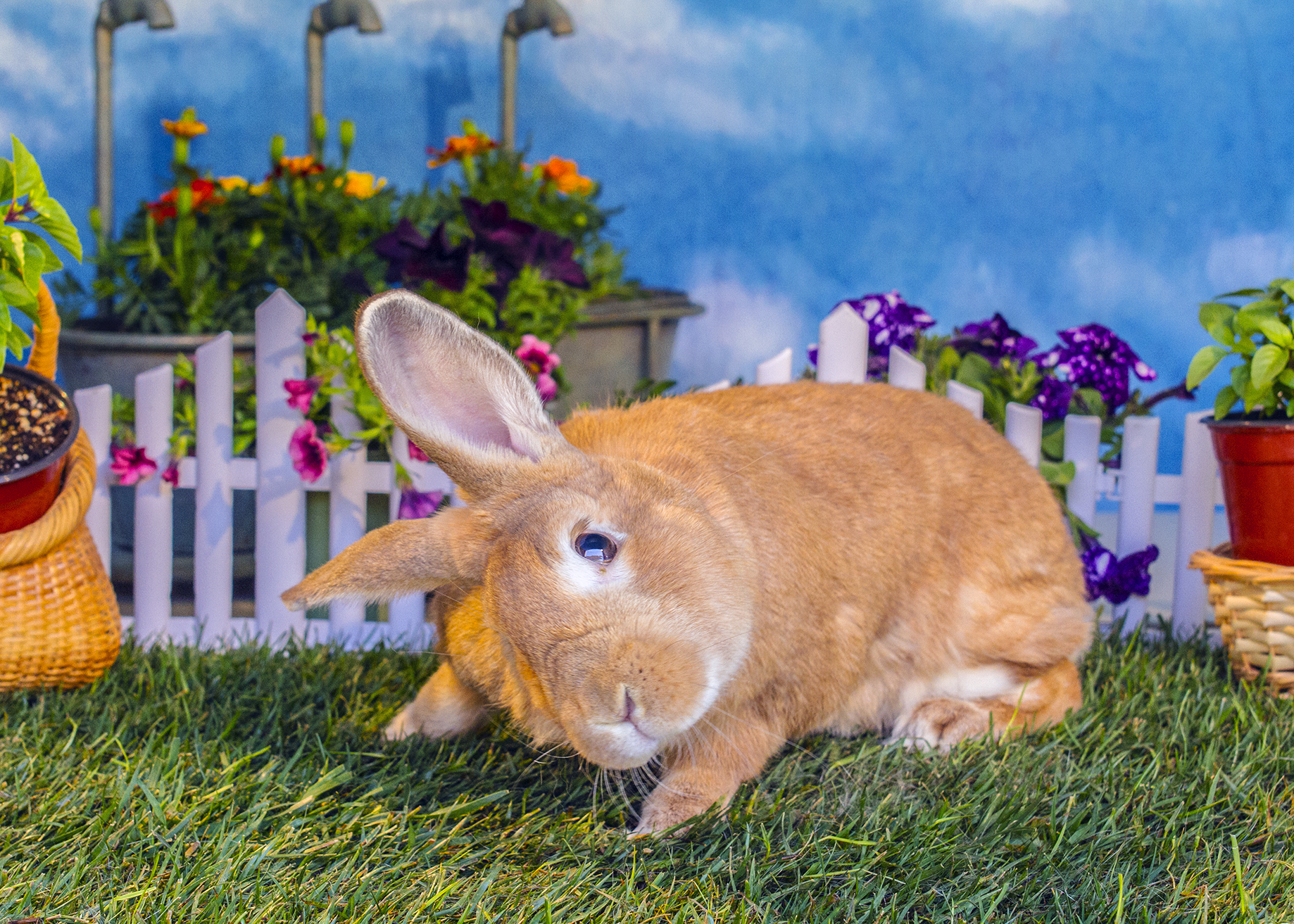 Although Poppy had head tilt, she eventually adjusted to the new normal and lived a normal life.
Although Poppy had head tilt, she eventually adjusted to the new normal and lived a normal life.Photo by Dustin Yoder taken at BunnyLuv Rabbit Resource Center.
Whether the disease comes from the inner ear, the brain or both locations, it is difficult for veterinarians to diagnose the exact cause of head tilt. These affected areas are not easily accessed, and therefore, figuring out the exact cause can only be determined post-mortem.
However, blood work, x-rays, CT scans, MRI and a careful physical examination are useful to pinpoint the most likely cause. Since the problem is usually a bacterial and/or E. cuniculi infection, many veterinarians will aggressively attack with a broad spectrum of antibiotics to kill both aerobic and anaerobic bacteria as well as fenbendazole (Panacur) to control the E. cuniculi. An NSAID, such as meloxicam (Metacam), will often be prescribed to reduce inflammation and provide pain relief. Steriods are typically not recommended as rabbits are very susceptible to the side effects, however, in rare and extreme circumstances, it may be helpful. Meclizine, which is an anti-nausea drug sold OTC as a motion sickness medication, can also be used. Whether a rabbit truly feels nausea or gains a benefit from this medication is unknown, but it can be safely administered.
The "down" eye (the eye pointing towards the ground) is more prone to injury and drying out. Eye lubrication is necessary.
Supportive care, such as syringe-feeding and administering fluids, may also be necessary, especially in the first few days of the disease. How often and how long supportive care is required depends on the bunny and the severity of the illness.
Long term antibiotics is essential. The minimum should be 10-12 weeks, however, you may need to administer medications for several months. Since there are few blood vessels traveling to the inner ear, it can take a long time for antibiotics to be effective. If there is no noticeable improvement after the first month, your veterinarian may switch antibiotics. Usually pain medication, fluids and Panacur are not intended for the entire treatment. Again, your veterinarian will determine the best therapy plan for your bunny.
At the initial onset of the disease, the bunny should be in a smaller space, such as a 2x4 exercise pen with the sides of the pen padded with rolled up towels. This is so the bunny doesn't have to move as much and it limits how often he rolls. However, as soon as the bunny shows signs of being stable, he should be encouraged to exercise as much as possible. The additional movement will help strengthen his sense of balance.
With appropriate treatment and care, a head tilt bunny can recover enough function to live his life normally. Even if permanently tilted, these bunnies can resume jumping into litter boxes and running down a hallway without danger of losing balance and rolling.
For more information, read Caring for Head Tilt Rabbits.
Available Now!
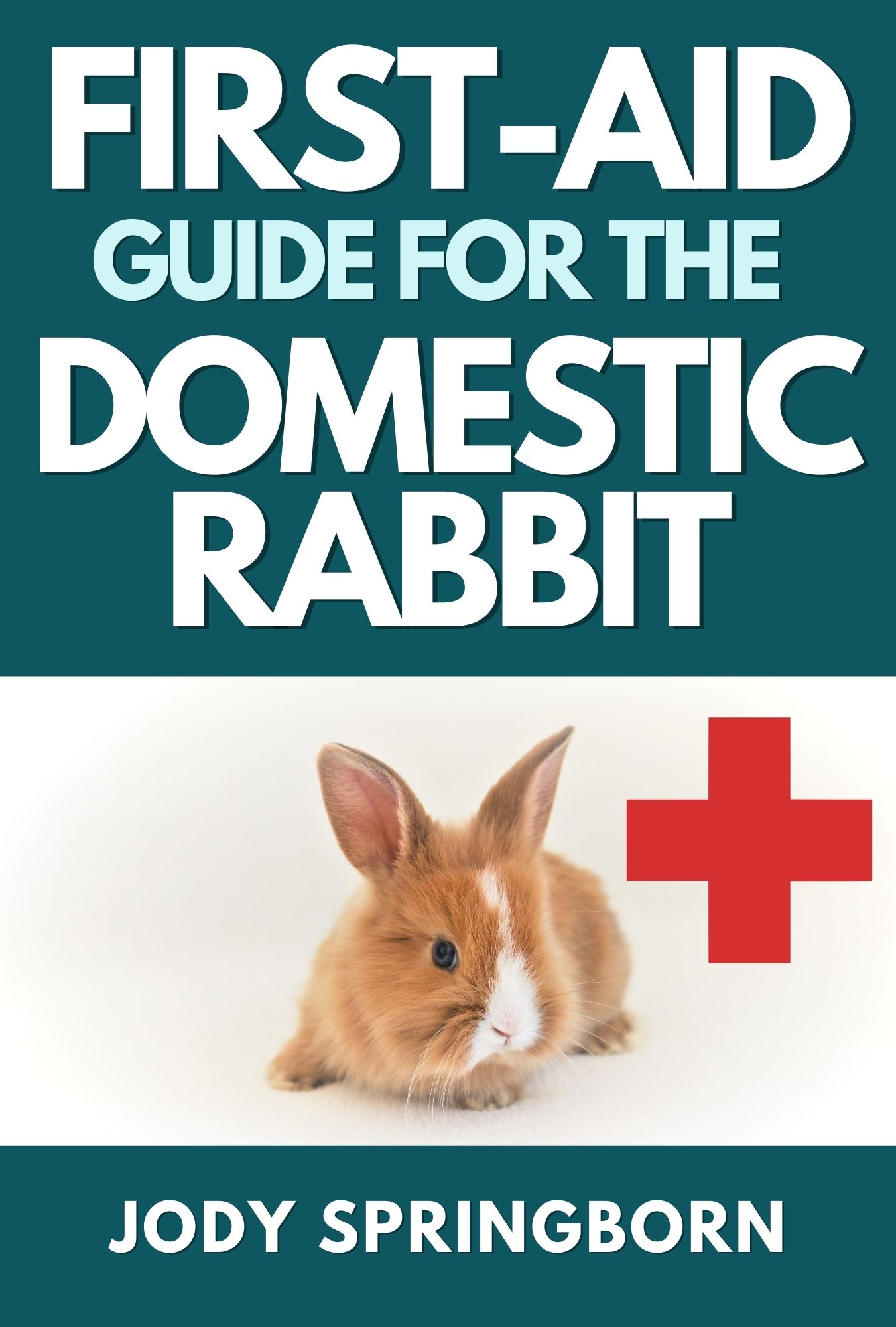
Often times, rabbit health issues require immediate attention. My First Aid Guide for the Domestic Rabbit will show you the most common health issues and teach you the basic skills you should have when your bunny needs you the most. There are over 100 color photos that show you all the supplies you need and how to help your rabbit in easy to follow step-by-step instructions.
Further Reading
Antinoff, N. 2009. Head Tilts in rabbits (Proceedings). dvm360.
Brown, S.A. 2011. Head Tilt in House Rabbits. House Rabbit Society.
Harcourt-Brown, F. 2002. Textbook of Rabbit Medicine. Butterworth Heinemann. pg. 310-314.
Krempels, D. 2014. Head Tilt (Torticollis) in Rabbits: Don't Give Up. H.A.R.E., Inc.
Robb, R. 2017. CNS disease in rabbits: E. cuniculi & the inner ear. Vets Now.
The information presented is for educational purposes only and does not substitute veterinarian care. This information should not be used for diagnostic purposes, for treatment of an illness or injury and never should be substituted for veterinarian care by a licensed veterinary practitioner. The Educated Rabbit cannot be held responsible for the accuracy of the information contained, nor be held responsible for any action, based on information found in The Educated Rabbit.
Seek advice from your veterinary professional for any rabbit health issues and before administering any drugs!
